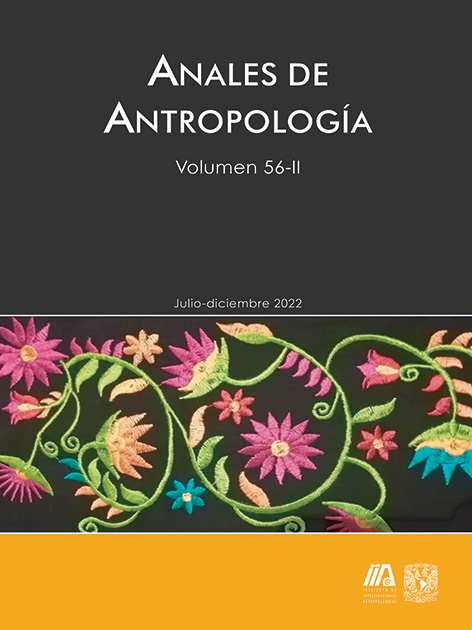The walled city and the dogs: the ritual and domestic role of canis lupus familiaris in Mayapán, Yucatán
Contenido principal del artículo
Resumen
This paper documents the role of domestic dogs (Canis lupus familiaris) in the domestic and ritual contexts of Mayapán. Mayapán was the last capital of the Postclassic Maya to be located on the Yucatán Peninsula. Dog remains have been recovered from ceremonial, elite, and lower-class contexts in the city. I analyze the distribution of skeletal elements and contexts of deposition in temples, halls, and houses, both in Iztmal Ch’en's monumental center and outlying ceremonial center.
This paper presents the results of the identification of dog remains per structure, osteometric analysis, and estimations of weight and age. Counts of the number of identified specimens and the minimum number of individuals are performed, along with Chi-square, Fisher's exact test and principal coordinate analysis, to compare the presence of skeletal elements and the abundance of dog remains in each of the structures. Osteometric data from documented dog breeds, including the Mesoamerican common dog, the hairless dog, the Mayan short-faced dog, the tlalchichi, and the dog-wolf hybrid, are compared with measurements of maximum long bone length and the length and breadth of upper and lower first molars. An allometric formula used mandible height measurements at the middle of the first lower molar to predict body weight in grams. Observations of ossification in each skeletal element and dental eruption were compared to age charts to identify the ages of dogs recovered in Mayapán. This study shows that dogs were an important component of ritual life in Mayapán and were offered at ceremonies or feasts in the Templo Redondo group. It also demonstrates that the use of dogs in burial rituals and their consumption in domestic contexts was not restricted to elites.
Descargas
Detalles del artículo
Citas en Dimensions Service
Esta revista usa una licencia CC del tipo CC BY-NC-ND 3.0. Se maneja bajo el esquema de acceso abierto, con una licencia Creative Commons Attribution-NonCommercial-NoDerivs 3.0 Unported.
